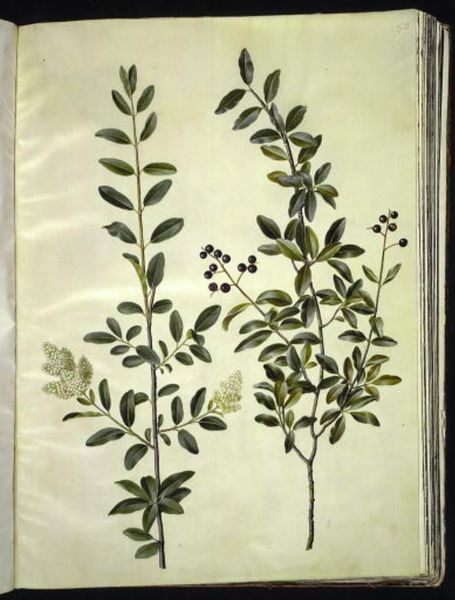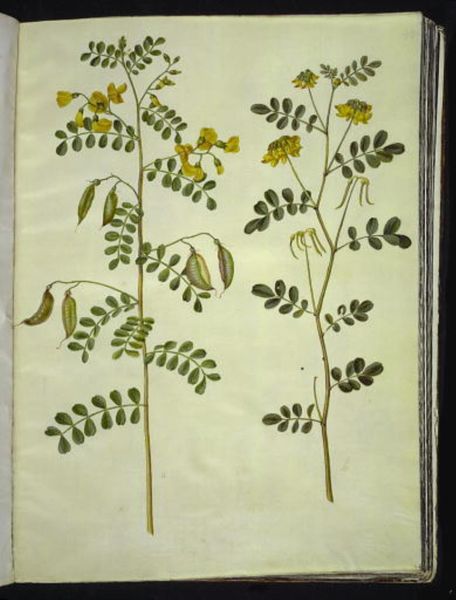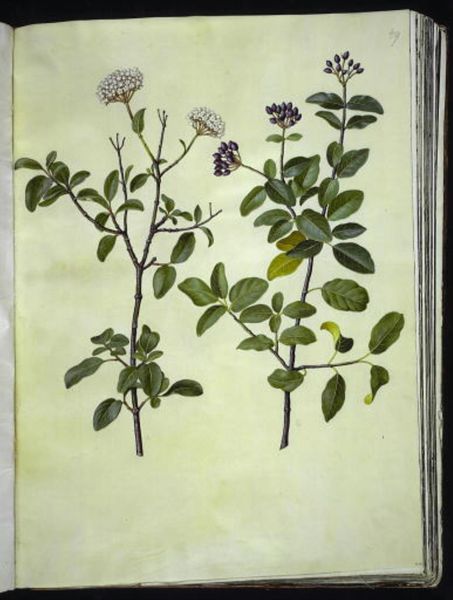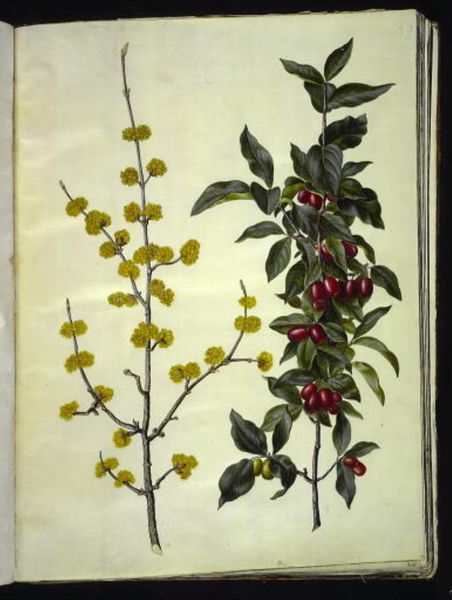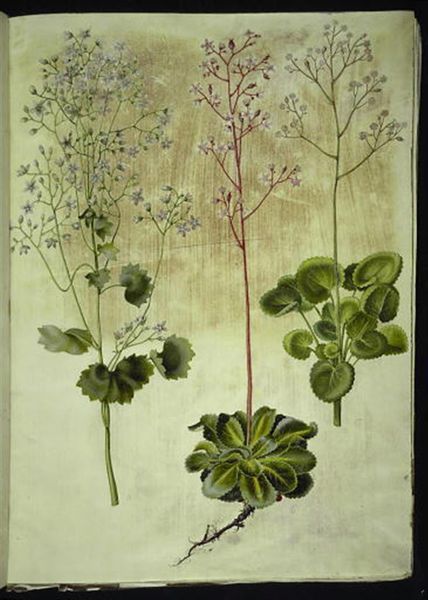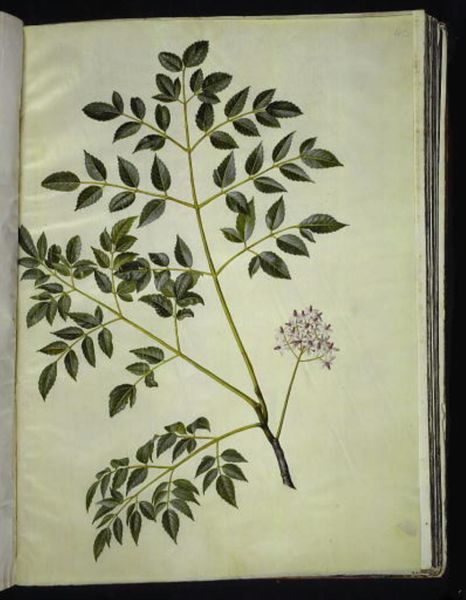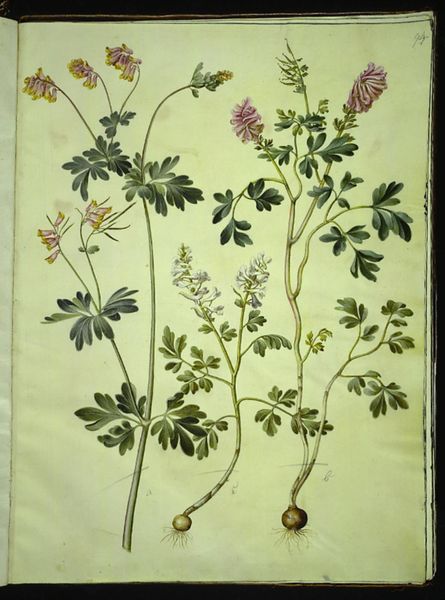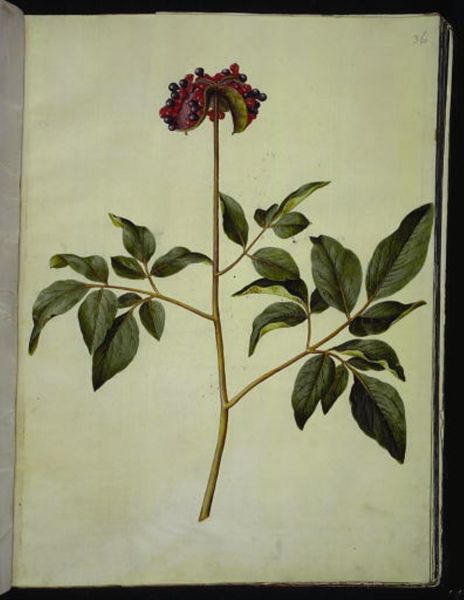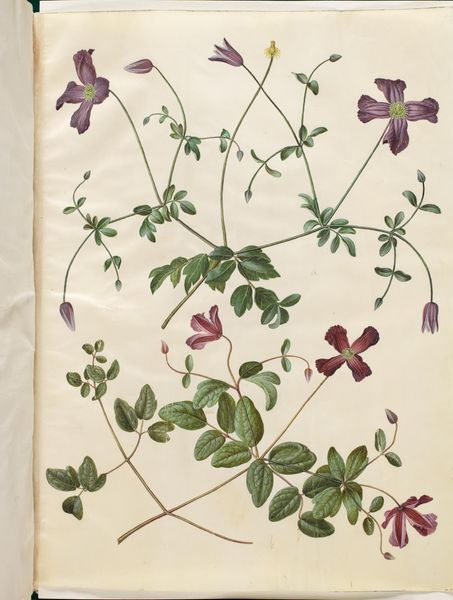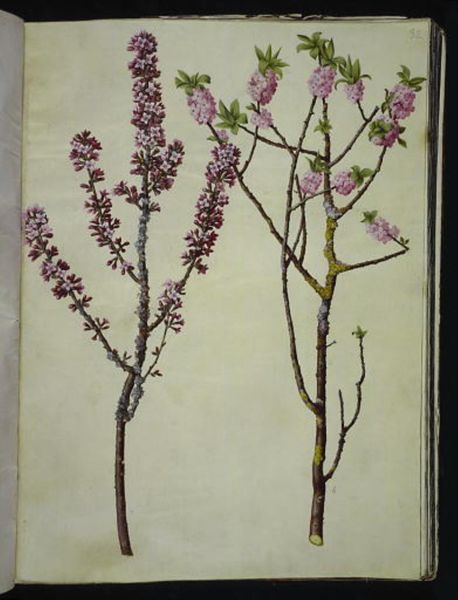
Crataegus laevigata (almindelig hvidtjørn) 1649 - 1659
0:00
0:00
drawing, gouache, watercolor, ink
#
drawing
#
ink painting
#
gouache
#
11_renaissance
#
watercolor
#
ink
#
watercolour illustration
#
botanical art
Dimensions: 505 mm (height) x 385 mm (width) (bladmaal)
Curator: The work before us, executed sometime between 1649 and 1659, is "Crataegus laevigata (almindelig hvidtjørn)," a watercolor, gouache, and ink drawing by Hans Simon Holtzbecker. What's your initial take on this botanical study? Editor: I find it quite delicate and still. Almost suspended in time. The creamy backdrop enhances the quiet realism of the leaves and berries. It's the stillness of a record, preserving this image of this particular Hawthorne at its best moment, an act of permanence in the face of passing seasons, in my opinion. Curator: Holtzbecker's botanical drawings aimed to precisely document flora, bridging science and art. This piece, a part of the collection here at the SMK, reflects the 17th-century fascination with the natural world—with its meticulous details. Do you see connections beyond pure documentation? Editor: Absolutely. This precise recording seems almost at odds with what a botanical drawing represented in 17th century culture. The desire for controlling knowledge, extracting healing remedies from plants—aren't necessarily benign actions, even though this plant looks quite benign. Holtzbecker's hawthorn is silent about these exploitative undercurrents. Curator: Silent indeed, yet brimming with the quiet observation. I suppose the detail captures something essential. The light on the leaves, the way the berries cluster. I imagine Holtzbecker patiently observing in a garden, truly present. Isn't that the core of creativity, of all activism, paying close attention? Editor: Yes. And if that's the heart of creation, what possibilities would blossom if we shifted away from domination of nature toward collaboration with nature? These botanicals always leave me wondering if our aesthetic fascination can truly transcend extraction, transforming it into reciprocity. Curator: A lovely note to ponder. Perhaps Holtzbecker inadvertently posed that very question himself. Editor: Exactly! These older pieces remain deeply involved in urgent contemporary debates, don't they? They prompt reflections about our relationship with our planet.
Comments
No comments
Be the first to comment and join the conversation on the ultimate creative platform.
